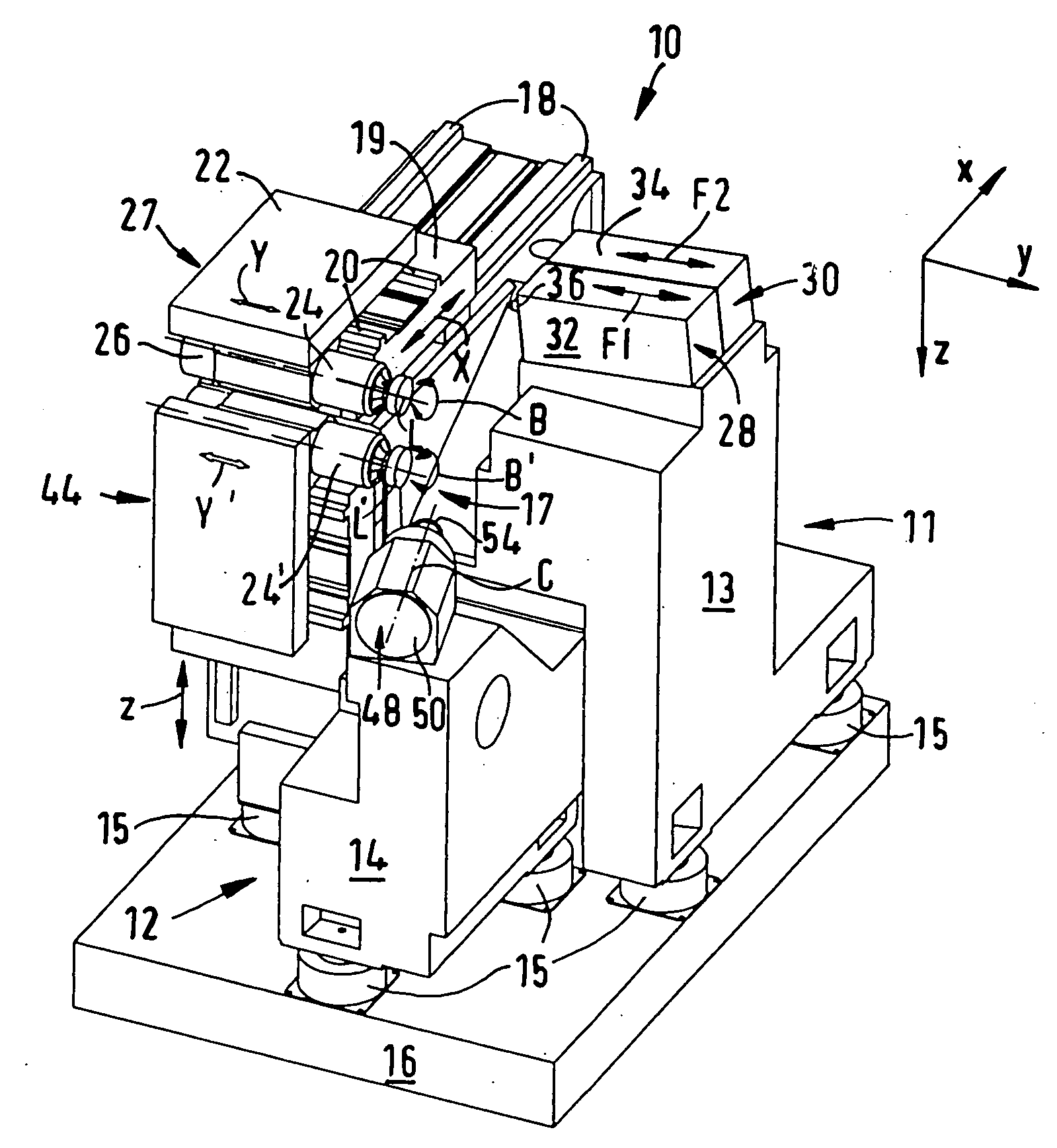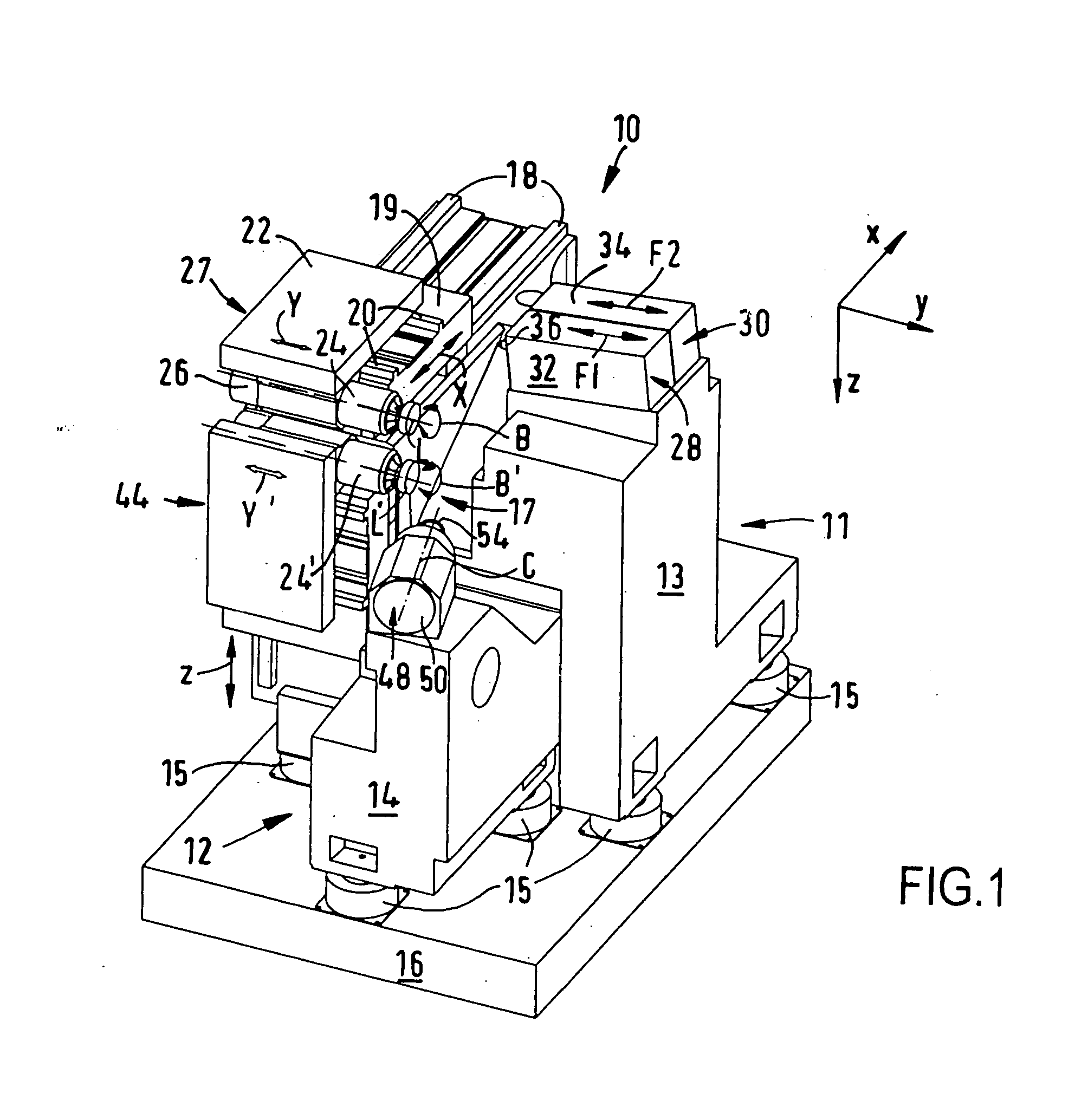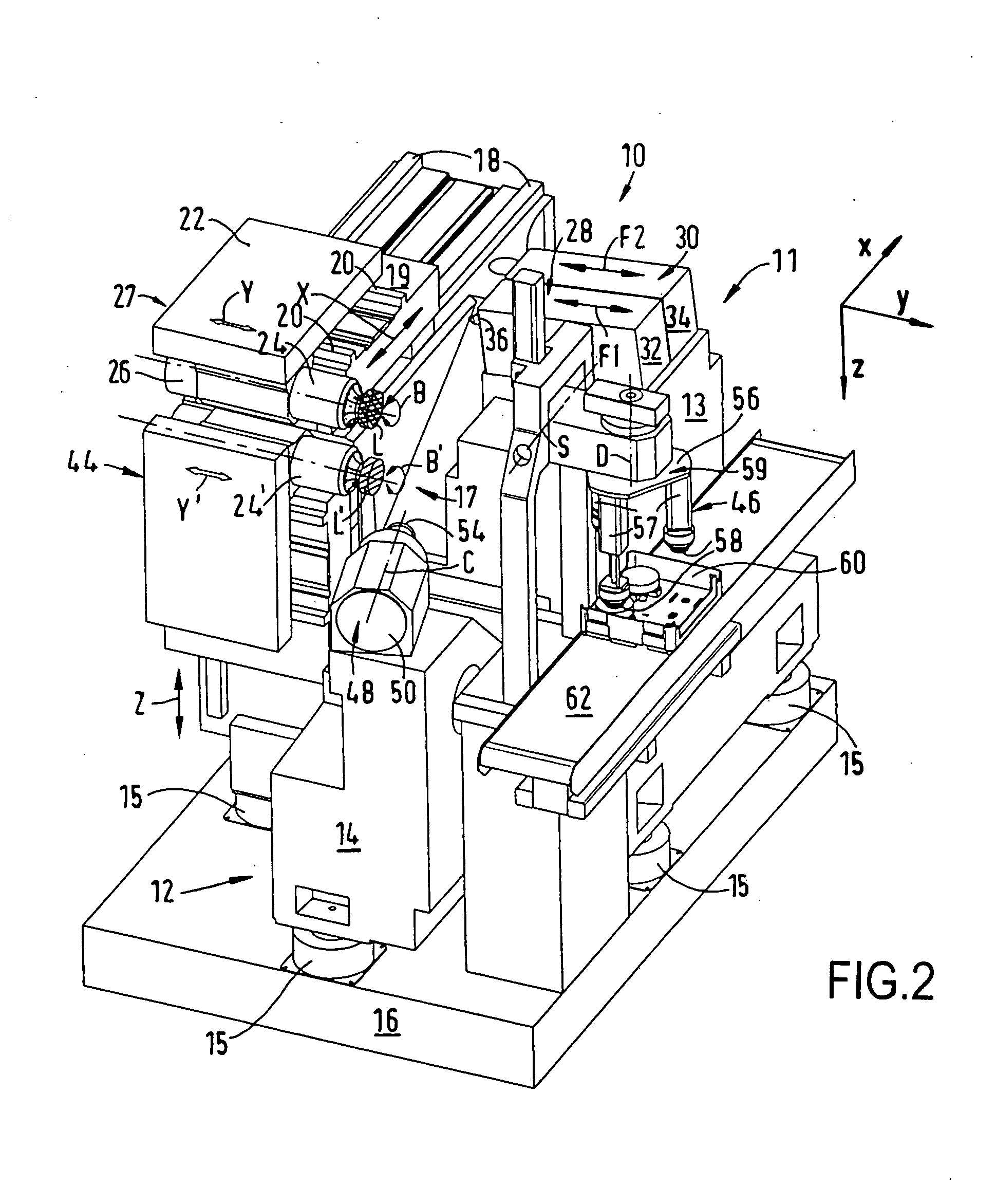High-performance cutting and turning machine and method for machining particularly spectacle lenses
a cutting and turning machine, high-performance technology, applied in the direction of turning machines, turning machine accessories, lenses, etc., can solve the problems of considerable idle times of the respective machining unit, and achieve the effects of high machining performance, cost-effective, and extremely short time-consuming
- Summary
- Abstract
- Description
- Claims
- Application Information
AI Technical Summary
Benefits of technology
Problems solved by technology
Method used
Image
Examples
Embodiment Construction
[0024] FIGS. 1 to 11 show in a partially schematic manner a CNC-controlled high-performance cutting and turning machine 10 for machining spectacle lenses L made of plastic in a right-angled Cartesian co-ordinate system, in which the small letters x, y and z respectively denote the width direction (x), the length direction (y) and the height direction (z) of the machine 10. The casings and protective devices of the machine 10 have been omitted in the figures for the sake of clarity.
[0025] According to FIGS. 1 to 5, the machine 10 comprises a turning unit which is referenced 11 as a whole and a cutting unit which is referenced 12 as a whole, which are isolated from one another in terms of vibration. The turning unit 11 comprises a first machine frame 13 which is made of polymer concrete, while the cutting unit 12 comprises a second machine frame 14 which is also made of polymer concrete. The first machine frame 13 and the second machine frame 14, which do not make contact with one an...
PUM
| Property | Measurement | Unit |
|---|---|---|
| angle | aaaaa | aaaaa |
| angle | aaaaa | aaaaa |
| distances | aaaaa | aaaaa |
Abstract
Description
Claims
Application Information
 Login to View More
Login to View More - R&D
- Intellectual Property
- Life Sciences
- Materials
- Tech Scout
- Unparalleled Data Quality
- Higher Quality Content
- 60% Fewer Hallucinations
Browse by: Latest US Patents, China's latest patents, Technical Efficacy Thesaurus, Application Domain, Technology Topic, Popular Technical Reports.
© 2025 PatSnap. All rights reserved.Legal|Privacy policy|Modern Slavery Act Transparency Statement|Sitemap|About US| Contact US: help@patsnap.com



